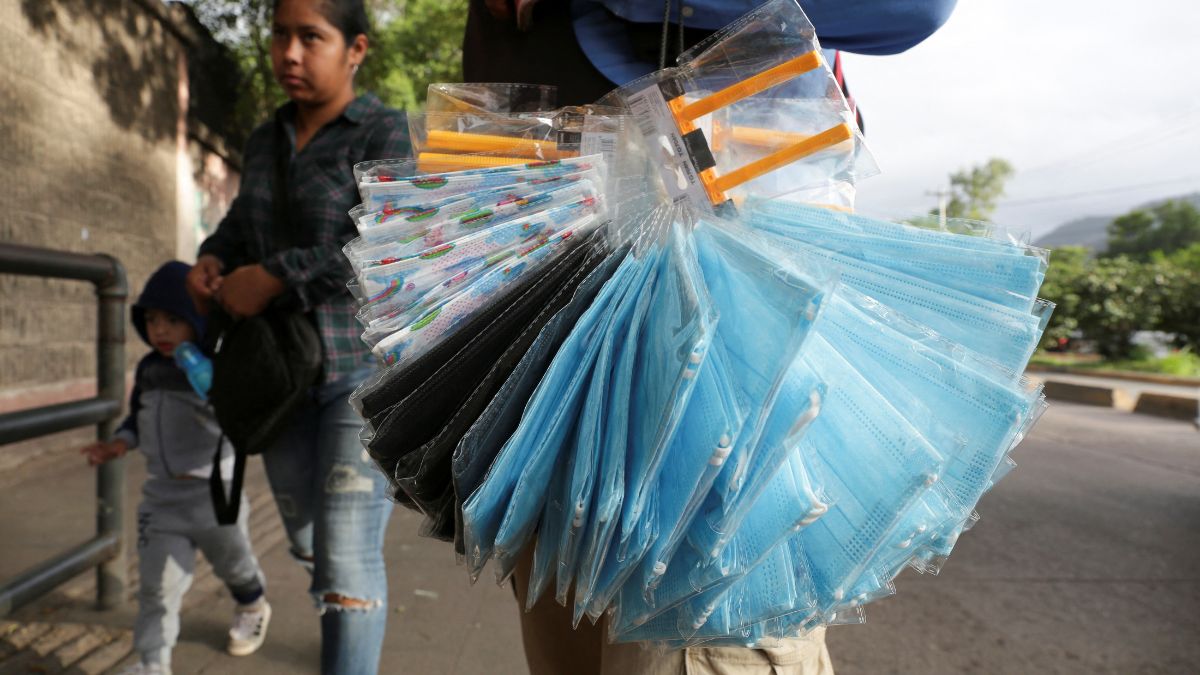Lockdowns, social distancing, and vaccination drives were key elements of the public health response of the Covid-19 pandemic.
Yet, perhaps no symbol became as closely associated with the crisis as the face mask.
For more than two years, masks were an essential part of daily life, worn everywhere — from crowded public transport to quiet neighbourhood walks.
While these protective coverings undoubtedly saved lives by curbing virus transmission, their widespread use has now triggered an entirely different crisis — a growing environmental disaster.
Recent studies have revealed that billions of masks discarded during the pandemic are now breaking down into microplastics and toxic chemicals, posing long-term threats to human health, wildlife and ecosystems.
When we witnessed a global surge in mask use
When Covid-19 struck in early 2020, global demand for face masks skyrocketed almost overnight.
According to research published in the journal Environmental Pollution, global usage of single-use disposable face masks (DFMs) surged by nearly 9,000 per cent between March and October 2020.
The World Health Organisation (WHO) estimated that during this period, healthcare workers alone required 89 million medical-grade masks every single day.
On a broader scale, mask consumption reached an astonishing 129 billion units per month worldwide at the pandemic’s peak.
These masks were largely made from polypropylene, a type of plastic well-suited for filtration. Other plastics, including polyethylene, polyester, polyamide/nylon, polycarbonate, and polystyrene, were also used in their construction.
Masks were cheap, readily available, and highly effective at trapping airborne particles, which made them an indispensable tool in slowing the spread of the virus.
How masks filled landfills across the globe
Most of these masks were designed strictly for single use. Once discarded, they had no established recycling route, which meant that nearly all of them ended up either in landfills or as litter in public and natural spaces.
As mask use became widespread, so did the problem of improper disposal.
Researchers documented masks strewn across streets, sidewalks, parking lots, parks, beaches, waterways, and even rural areas. The sheer volume of waste was staggering.
At the height of the pandemic, an estimated 3.4 billion masks were thrown away globally every day, according to environmental projections.
Between late 2019 and October 2020, about 4.3 million tonnes of non-recyclable, contaminated plastic waste were generated across 11 countries — including major economies such as the United States, United Kingdom, France, Germany, Canada, Spain, and Australia.
This disposal problem was compounded by the fact that these materials do not degrade quickly.
Instead, they gradually break apart into smaller fragments, which persist in the environment for decades.
What masks are made of — and why that matters
Face masks were manufactured using multiple types of synthetic polymers designed to filter out airborne particles.
The most common material was polypropylene, which was used extensively in both surgical masks and higher-grade respirators like N95, FFP2, and FFP3 masks.
These respirators, also known as Filtering Face Pieces (FFP), were particularly effective at protecting wearers from inhaling hazardous airborne particles such as dust, smoke, and viral droplets.
Their superior filtration capabilities made them the preferred choice for frontline healthcare workers and individuals in high-risk environments.
However, this enhanced performance came with a hidden environmental cost. New research indicates that FFP masks release significantly more microplastics into water and the environment than standard medical or surgical masks.
When researchers submerged masks in purified water for 24 hours, they discovered that all mask types released microplastics, but FFP2 and FFP3 respirators released three to four times more plastic particles than other masks.
“The particle sizes of MPs [microplastics] varied greatly, ranging from around 10μm–2,082μm, but microplastic particles below 100μm were predominant in the water leachates,” the study reported.
Fragments of polypropylene fibers were found in every sample, alongside smaller quantities of other polymers such as polyvinyl chloride, polyamide, and ethylene-propylene copolymer.
These particles are small enough to be ingested by aquatic organisms and eventually make their way into the human food chain through seafood and drinking water.
Discovery of toxic chemicals in masks
Beyond microplastics, researchers made another troubling discovery: bisphenol B (BPB), a known endocrine-disrupting chemical, was found leaching from the masks.
This compound acts like estrogen when absorbed into human and animal bodies, disrupting normal hormone function.
Endocrine disruptors have been linked to a range of serious health problems, including reproductive issues, developmental abnormalities, certain cancers, neurological disorders, and kidney dysfunction.
The study estimated that during the pandemic, discarded masks could have collectively released 128 to 214 kilogrammes of BPB into the environment.
The presence of BPB alongside microplastics creates what researchers describe as a “chemical timebomb” — a combination of pollutants with the potential to cause long-term harm to both ecosystems and human populations.
“This study has underlined the urgent need to rethink how we produce, use and dispose of face masks,” said Anna Bogush of Coventry University’s Centre for Agroecology, Water and Resilience, who led the research.
Bogush stated the need for public awareness and systemic change, “We can’t ignore the environmental cost of single-use masks, especially when we know that the microplastics and chemicals they release can negatively affect both people and ecosystems. As we move forward, it’s vital that we raise awareness of these risks, support the development of more sustainable alternatives and make informed choices to protect our health and the environment.”
What the long-term environmental impact will be
Microplastics and chemical additives do not simply disappear; they accumulate in soil, rivers, lakes, and oceans, gradually spreading throughout ecosystems.
Marine life is particularly vulnerable. Fish, shellfish, and other aquatic species can ingest these particles, which then travel up the food chain — eventually reaching humans.
Over time, continuous exposure to endocrine-disrupting chemicals like BPB may increase health risks for both wildlife and people.
Because many discarded masks were dumped without proper disposal, researchers have found them embedded in coastal sediments, riverbanks, and ocean currents, alongside other pandemic-related waste such as gloves and PPE packaging.
These plastics can persist for decades, continuously shedding microplastics and chemicals.
The irony, researchers note, is that the very tools that protected human populations from a deadly virus are now creating a new public health challenge.
The contamination they leave behind could continue affecting the planet for generations.
What can be some solutions going forward
One of the biggest challenges identified by researchers is the absence of recycling or safe disposal systems for face masks.
Traditional recycling plants are not equipped to handle contaminated medical waste, especially materials containing complex layers of plastics and chemical additives.
As a result, most masks were either burned, buried in landfills, or discarded into the open environment.
Researchers are calling for science-based policies to address this issue, highlighting collaboration between governments, manufacturers, waste management companies, and communities.
Experts believe that several steps can be taken to mitigate the damage caused by disposable masks:
Promoting reusable and biodegradable alternatives – Encouraging the development of masks made from sustainable materials that can safely decompose or be recycled.
Improving waste collection and segregation – Ensuring used masks are collected separately and processed through specialized facilities.
Public education campaigns – Raising awareness about the environmental risks of improper mask disposal and encouraging responsible behaviour.
Global policy alignment – Creating consistent international guidelines for PPE waste management, especially during emergencies.
Researchers also highlight the importance of continued monitoring and data collection to track the spread of microplastics and toxic chemicals released by pandemic-related waste.
“This study has underlined the urgent need to rethink how we produce, use and dispose of face masks,” Bogush said.
Also Watch:
With inputs from agencies


)

)
)
)
)
)
)
)
)



